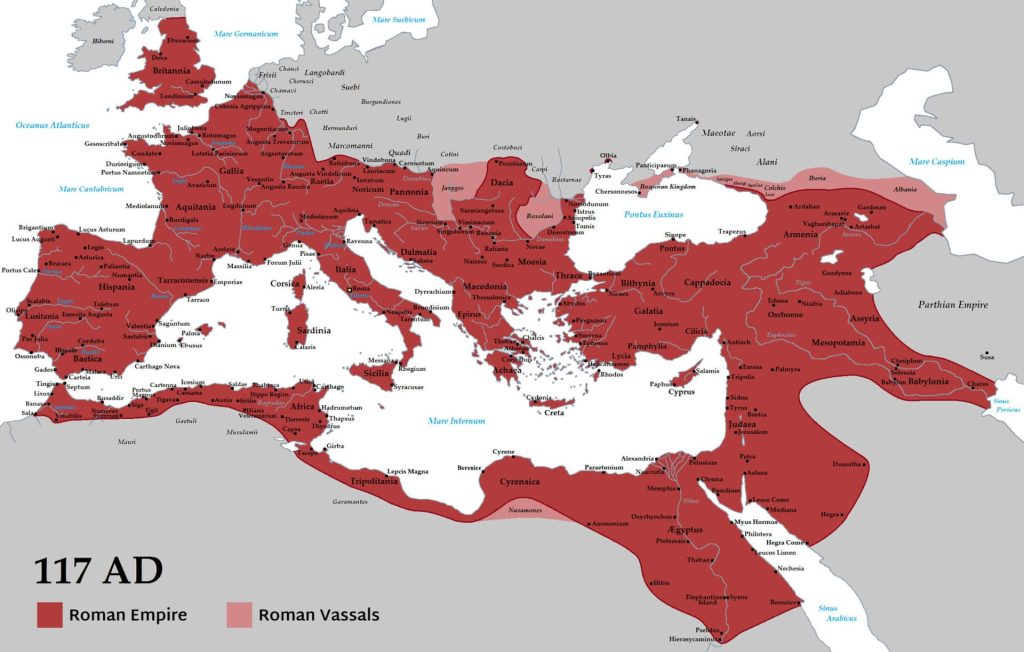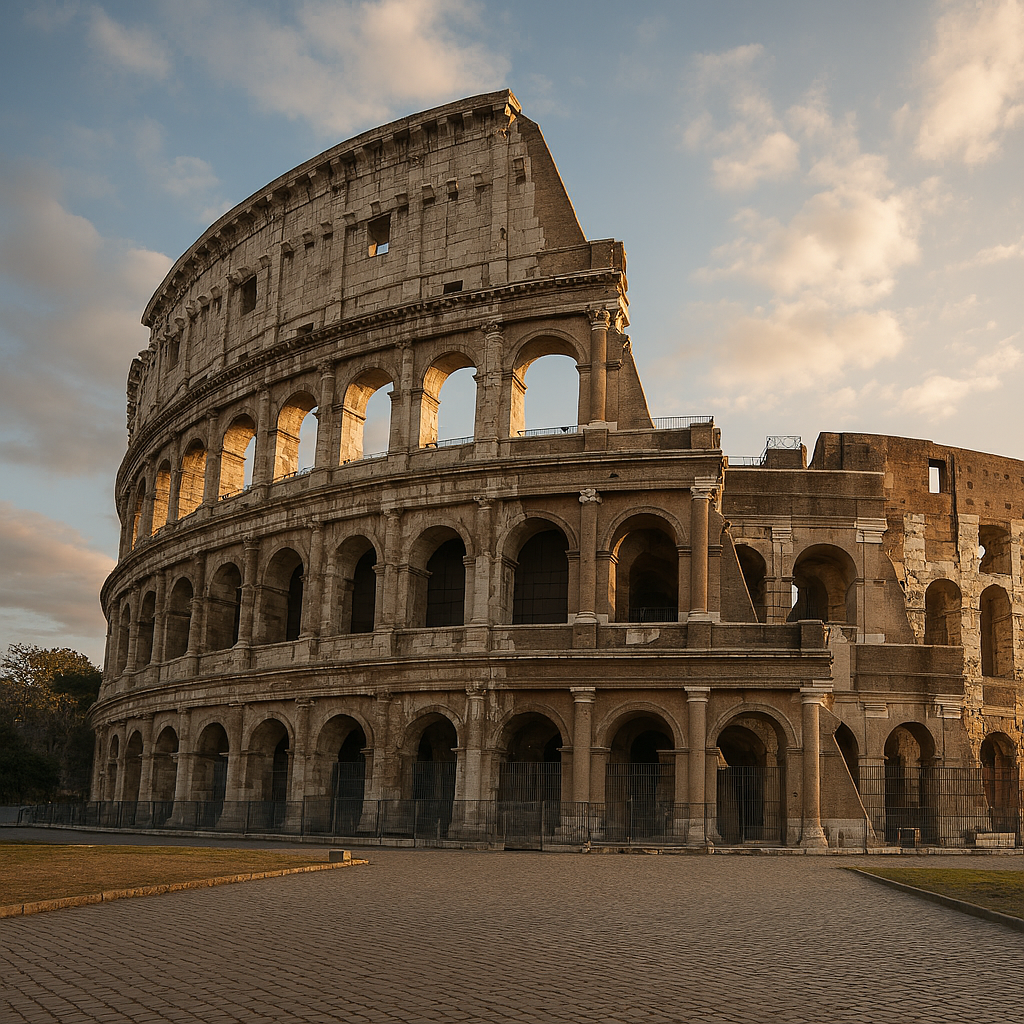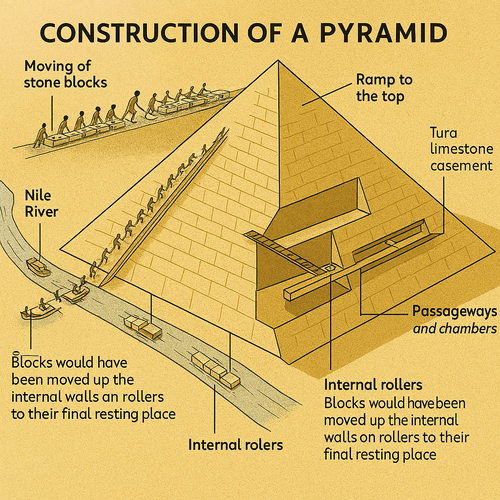
The Roman Empire’s history is one of the most remarkable stories in ancient history itself, spanning more than a thousand years from its mythic origins to its eventual fall. It’s a story of change—from modest origins to a vast empire that founded the course of Western history, culture, law, and government. To grasp this large history, it’s necessary to follow its beginnings, turning points, triumphs, setbacks, and causes of its fall.
Founding and early history
The history of Rome begins in 753 BCE, according to Roman legend, with twin brother Romulus and Remus, who were suckled by a she-wolf in myth. Romulus was the first king of Rome after a series of mythic events that claimed divine and heroic origins for the city. While these stories are mythic, they show the Romans’ sense of divine fate and martial virtue that would be theirs.
Initially, Rome was a small city-state along the banks of the Tiber River in central Italy. Its geopolitical location facilitated trade, communication, and military travel, thus facilitating expansion. Rome’s location helped it to control significant land roads and access to the Mediterranean, setting the stage for expansion.
Rome initially was a monarchy ruled by kings who enjoyed political and religious powers. Over time, the Roman nobility grew so strong that there was a transition around 509 BCE when the Romans overthrew their last king, Tarquin the Proud. This marked the beginning of the Roman Republic—a complex system of government with elected magistrates, a Senate, and popular assemblies. The Republic had a strong emphasis on civic responsibility, military duty, and a check-and-balance system designed to prevent any one individual from becoming too dominant.
Republican expansion and military power
Across the Republic, Rome’s political organization and military power powered its expansion across Italy. Rome’s armies were well-disciplined, innovative, and adaptable and hence were able to conquer rival city-states and tribes. Rome’s commitment to an organized military was offset by strategic alliances through treaties and colonization.
Rome’s expansion was not just of Italy but also comprised a series of wars that had become popularly known as the Punic Wars with Carthage, a mighty city-state of North Africa. The Punic Wars (264–146 BCE) were central to defining Roman dominance of the western Mediterranean. The First Punic War (264–241 BCE) was fought primarily at sea over Sicily, which eventually came into Rome’s hands. The Second Punic War (218–201 BCE) is best recalled for Hannibal’s daring invasion of the Alps on elephant back—a strategic feat—and for the stubbornness of Rome in ultimately winning Carthage. The Third Punic War (149–146 BCE) concluded with the complete destruction of Carthage, which was put to the torch, and its territory converted into a Roman province.
Rome’s triumph in these wars increased its territories, wealth, and domination in the Mediterranean world. This was also the period of rise of influential Roman politicians and generals such as Scipio Africanus, who played key roles in the wars. The triumph over Greece, Asia Minor, and North Africa made Rome a great empire.
Civil wars and the transition to an empire
Despite its military successes, late Republican Rome was weakened by internal instability. Wealth disparities, corruption, and difficulties of managing an expanding empire created tensions among Rome’s aristocracy. Ambitious generals like Gaius Marius, Lucius Cornelius Sulla, Pompey, and Julius Caesar vied for control through both military victories and political maneuvering.
The rise of Julius Caesar is the archetype of such disruption. His crossing of the Rubicon River in 49 BCE was an ill-fated act of civic disobedience that precipitated a civil war. His success earned him dictatorship and reforms intended to cement authority. But his assassination by senators worried about his growing powers in 44 BCE created even greater turmoil.
This condition resulted in the rise of Augustus (Gaius Octavius), who was victorious in a series of civil wars. In 27 BCE, Augustus was given the title of “Princeps,” Rome’s first emperor. His rule ended the Roman Republic and the beginning of the Roman Empire.
The Pax Romana: An age of stability and prosperity
Under Augustus and his successors, Rome embarked on an era known as the Pax Romana—”Roman Peace”—which lasted approximately two centuries (27 BCE to 180 CE). It was a period of approximate peace, economic expansion, and cultural bloomings. The vast empire territory was managed efficiently with a system of provinces, each province being administered by officials affiliated with Rome.
In this period, massive building activities transformed the city of Rome and most of the empire. Aqueducts supplied water into cities to enable urban growth; roads facilitated trade and military movement with ease; and grand temples, theaters, and forums showcased Roman engineering prowess. The famous Via Appia, one of the earliest and most important Roman roads, shows the interest of the empire in communication and connectivity.
The economy thrived with trade, agriculture, and a unified currency, enabling commerce across the Mediterranean. Roman models for government and law influenced subsequent legal systems, while Roman art, literature, and philosophy reached its peak with the likes of Virgil, Horace, Livy, and Seneca.
Challenges and decline
Despite its prosperity, the Roman Empire had an extremely difficult time in the 3rd century CE. It has been termed the “Crisis of the Third Century” and was marked by political turmoil, economic decline, and foreign invasions. The empire experienced high levels of replacement among emperors—most of whom were assassinated or overthrown—and internal civil wars.
On economic fronts, the empire was in the grip of inflation, heavy taxation, and reliance on slave labor. Destabilization of existing civic and military structures made it difficult to defend such huge perimeters. External pressures intensified as barbarian tribes such as the Goths, Vandals, Huns, and Franks invaded and migrated into Roman territories.
To offset these threats, Emperor Diocletian (284–305 CE) attempted to stabilize the empire by dividing it into the Western and Eastern Roman Empires, both ruled by a tetrarchy—two emperors and two subordinates. This governmental division was intended to improve governance and defense but laid the groundwork for divergent fates.
The fall of the Western Roman Empire
The Western Roman Empire was repeatedly invaded and internally decaying. The Visigothic sack of Rome in 410 CE was a symbolic victory, but the subsequent invasions of Vandals and Ostrogoths reduced its territories. The downfall of the Western Roman Empire is conventionally dated at 476 CE when the last Western Roman emperor Romulus Augustulus was toppled by German chieftain Odoacer.
This marked the end of central Roman authority in the West. The Eastern Roman Empire, however, continued on for nearly another thousand years, maintaining Roman law, culture, and Christian traditions in what has become known as the Byzantine Empire.
The decline of Rome was triggered by a combination of factors: economic hardship, military defeat, political corruption, civil wars, and manipulations of moving and invading barbarian armies. The decline of Rome is generally accepted as a moment of transition that created the start of the early medieval period in Europe.
Legacy of Rome
Although the Roman Empire fell, its influence persists. Roman law is the basis of the majority of contemporary legal systems. Latin, the language of the Romans, evolved into the Romance languages and influenced numerous others. Roman engineering and architecture set the standard for buildings, and Roman political thought on government and citizenship continues to influence modern democracies.
Rome’s fall also serves as a reminder that even the most magnificent civilizations are not immortal. Its own history reinforces within us the importance of perseverance, adaptability, and the long-term effects of cultural achievement.
On the whole, the Roman Empire’s history is an example of human creativity and drive and the complex interaction of social, political, and military forces that shape history. From mythic origins to imperial greatness and final failure, the story of Rome is one of the most compelling narratives in global history, echoing down the centuries in laws, languages, and cultural aspirations that continue to inform today’s world.

